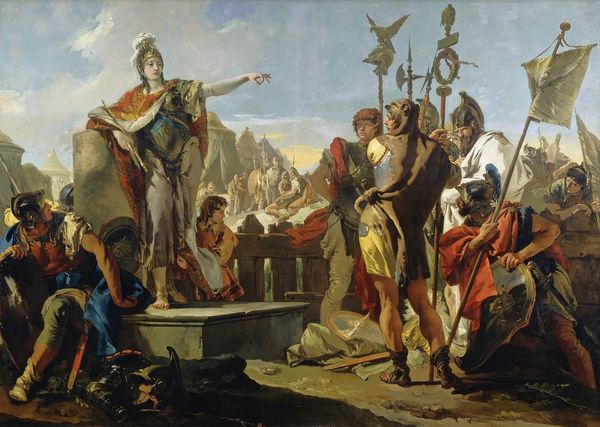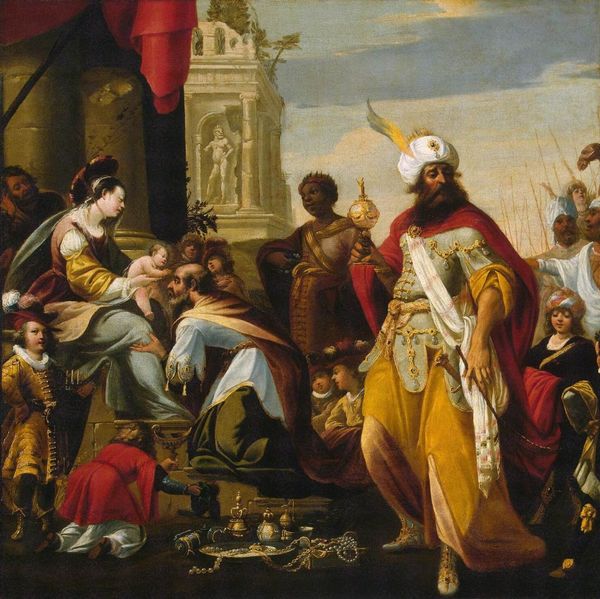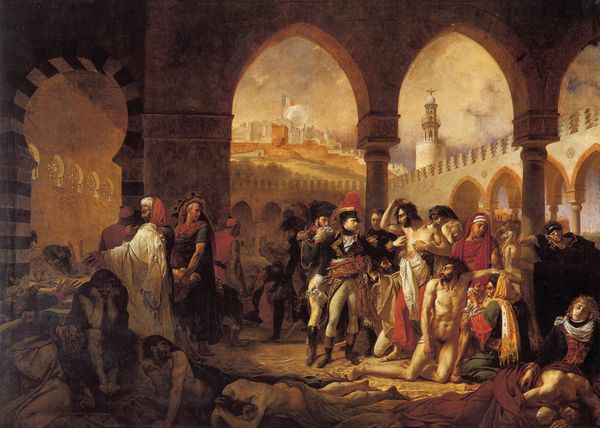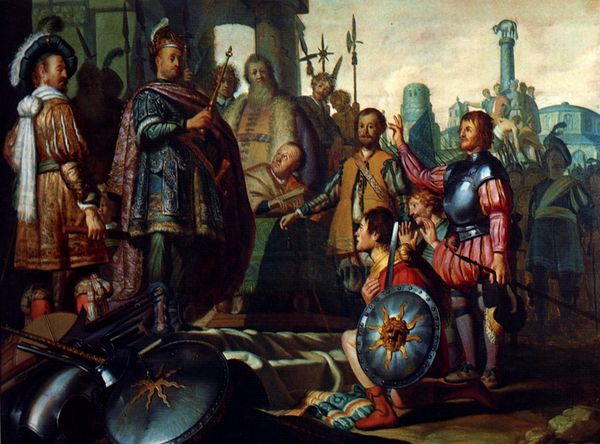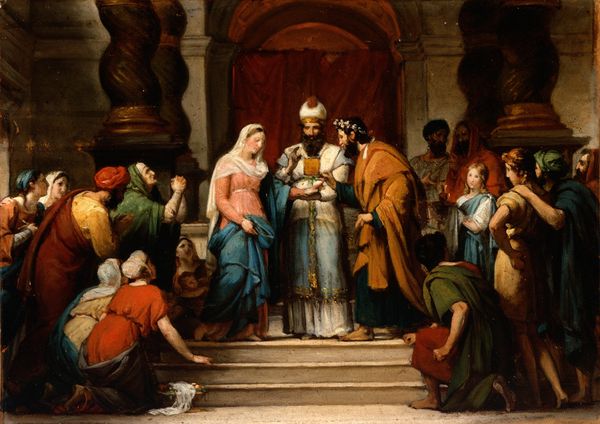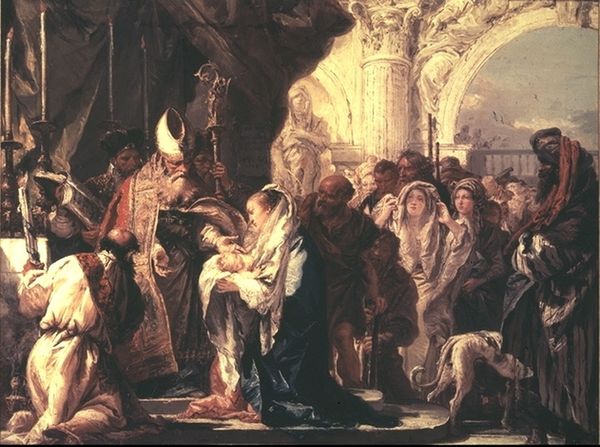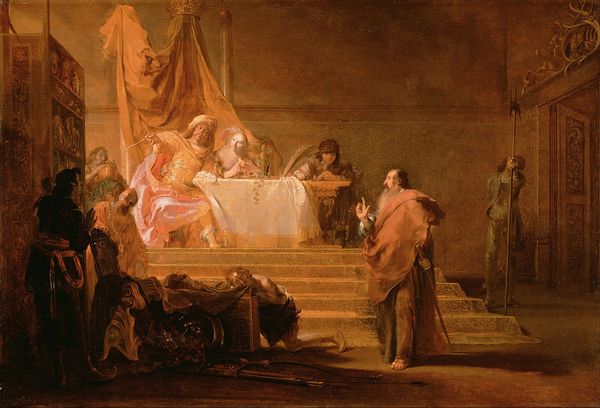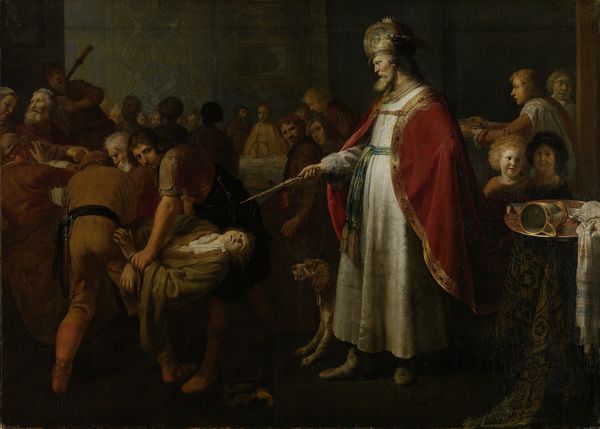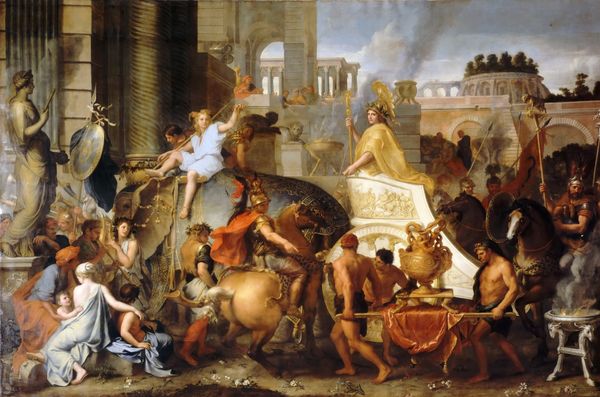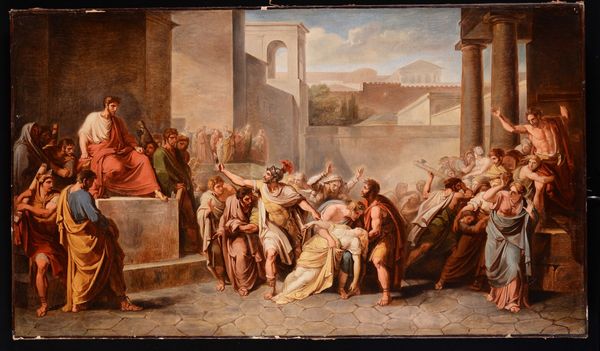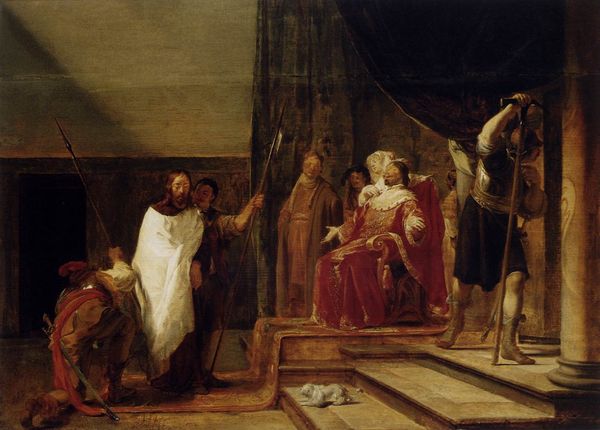
oil-paint
#
baroque
#
oil-paint
#
figuration
#
oil painting
#
painting painterly
#
history-painting
Copyright: Public domain
Editor: This oil painting, "Arria and Paetus" by Nikolaus Knüpfer, created in 1655, feels charged with tension. The warm, almost fiery palette contrasts sharply with the cold, implied threat of violence. What's your interpretation of this dramatic scene? Curator: The drama, indeed, invites a look at its historical context. Knüpfer is portraying a pivotal moment from Roman history, an example of Stoic heroism. Arria, defying societal expectations, demonstrates courage and sacrifice, pushing against the constraints of her time. Considering gender roles of both ancient Rome and the 17th century when this was painted, what do you think this image might say about female agency and resistance? Editor: I see what you mean. She's definitely challenging the patriarchal structures by taking control of her own fate, even guiding her husband. The act with the dagger—is that a symbol? Curator: Absolutely. The dagger becomes a potent symbol of defiance against tyranny and of ultimate devotion. It also questions how power is wielded and resisted, especially by those who seemingly have none. But consider how access to this story, and this very image, might have been mediated through class. Who was able to access and interpret images like these, and what actions would that access motivate them toward? Editor: That's fascinating. It adds a layer of complexity, realizing this wasn't just a universal message, but one consumed through specific socio-economic lenses. It’s more than just a historical snapshot; it's a reflection of power dynamics. Curator: Exactly! And by looking at these dynamics, we can consider what kind of resistance this represents today. In the end, Knüpfer gives us more than just a heroic act. What do you take away from the agency of resistance on display here? Editor: It pushes me to think of art as more than decorative; it’s a catalyst for conversations about power, gender, and resistance across time.
Comments
No comments
Be the first to comment and join the conversation on the ultimate creative platform.
